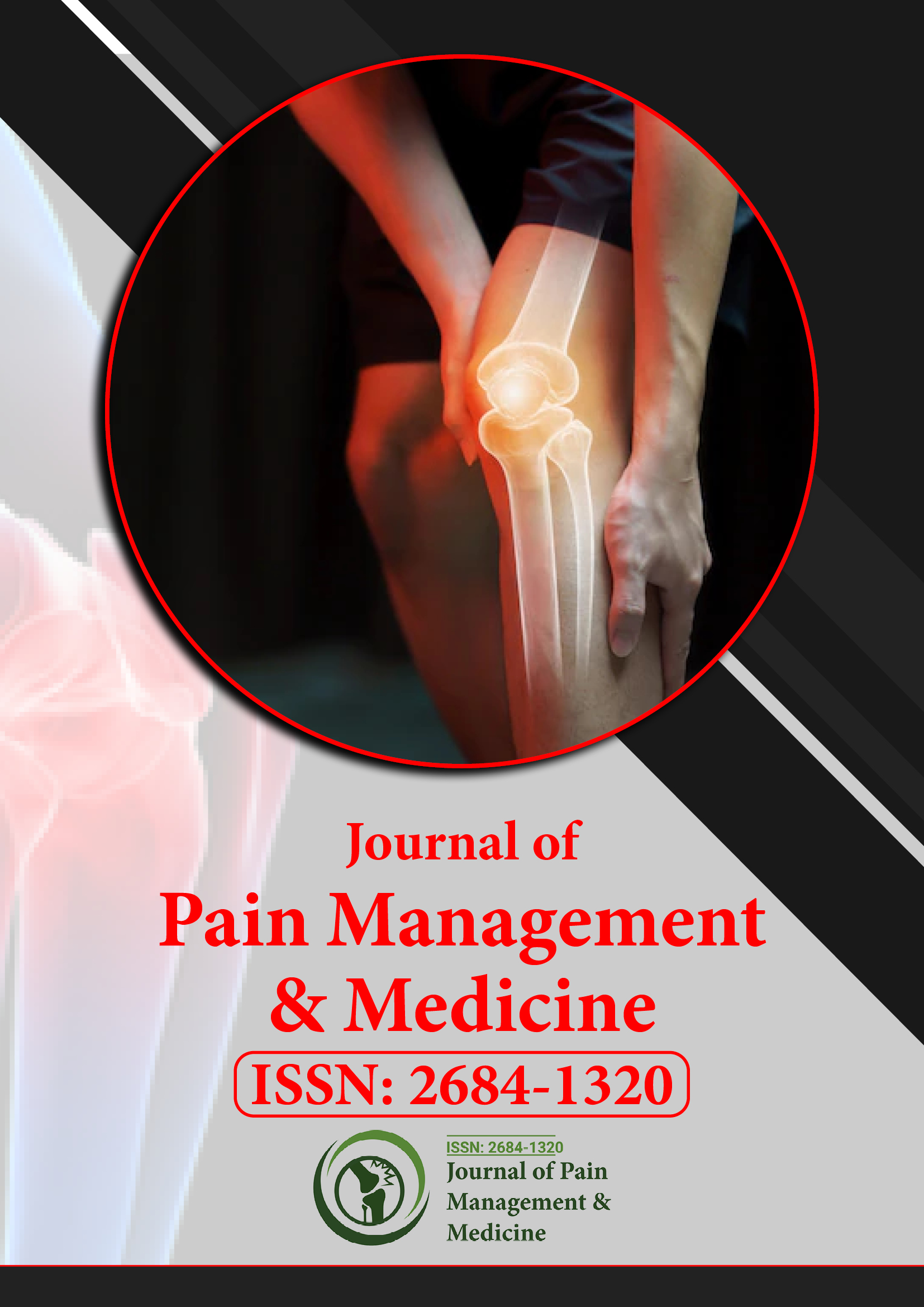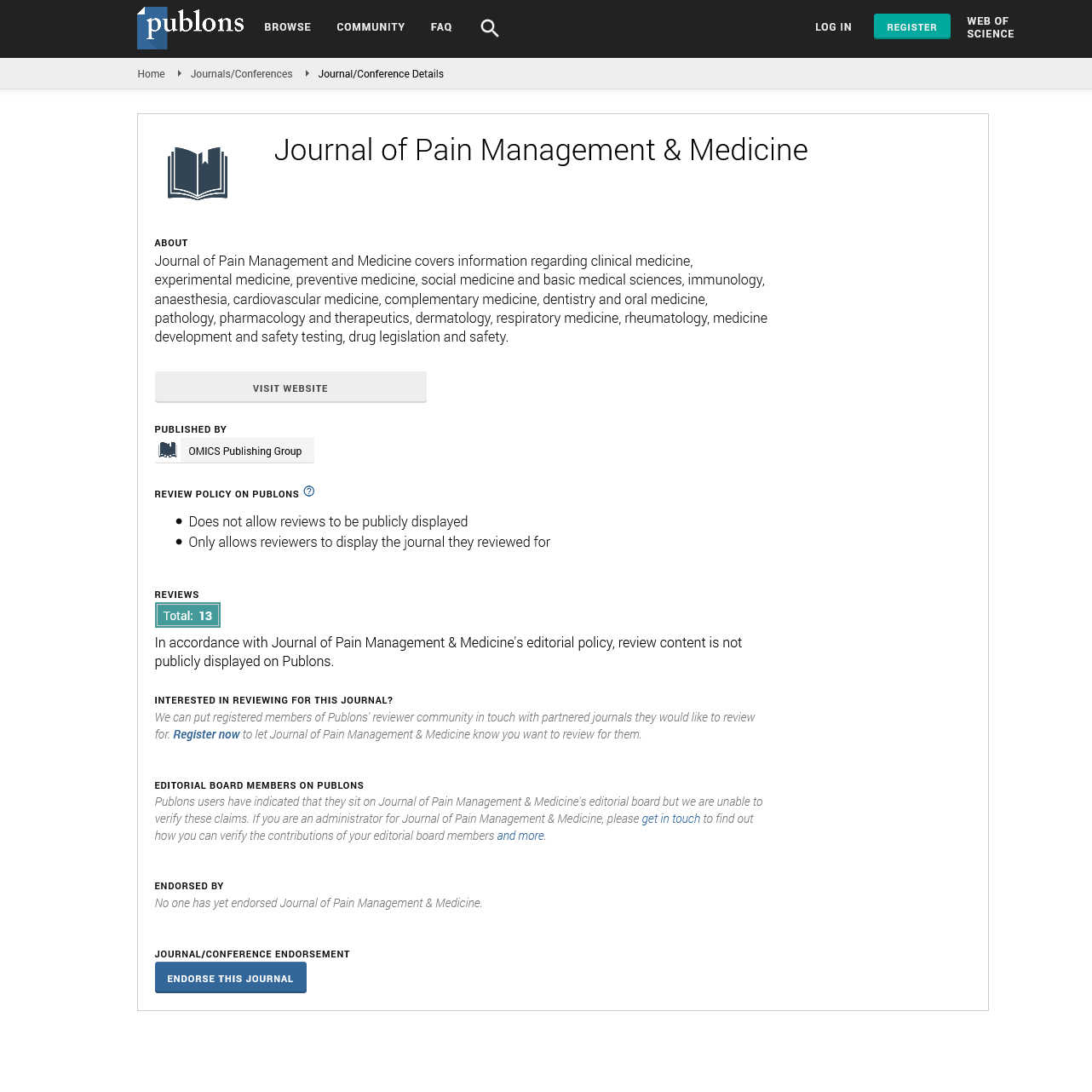Indexed In
- RefSeek
- Hamdard University
- EBSCO A-Z
- Publons
- Euro Pub
- Google Scholar
- Quality Open Access Market
Useful Links
Share This Page
Journal Flyer

Open Access Journals
- Agri and Aquaculture
- Biochemistry
- Bioinformatics & Systems Biology
- Business & Management
- Chemistry
- Clinical Sciences
- Engineering
- Food & Nutrition
- General Science
- Genetics & Molecular Biology
- Immunology & Microbiology
- Medical Sciences
- Neuroscience & Psychology
- Nursing & Health Care
- Pharmaceutical Sciences
Opinion Article - (2024) Volume 10, Issue 3
Underlying Mechanisms of Inflammatory Pain Techniques for its Management, and Emerging Therapies
Ling Chen*Received: 26-Apr-2024, Manuscript No. JPMME-24-26089; Editor assigned: 29-Apr-2024, Pre QC No. JPMME-24-26089 (PQ); Reviewed: 14-May-2024, QC No. JPMME-24-26089; Revised: 21-May-2024, Manuscript No. JPMME-24-26089 (R); Published: 29-May-2024, DOI: 10.35248/2684-1320.24.10.269
Description
Inflammatory pain, a complex and prevalent phenomena, results from the activation of inflammatory pathways in response to tissue injury, infection, or autoimmune processes. Despite nociceptive pain, which serves as a protective response to tissue damage, inflammatory pain continuous into the initial trauma and it is characterized by heightened sensitivity, swelling, and redness at the site of injury.
Mechanisms of inflammatory pain
Inflammatory pain develops from the release of inflammatory mediators, including cytokines, chemokines, prostaglandins, and bradykinin, in response to tissue injury or inflammation. These mediators activate nociceptors, specialized sensory neurons that detect noxious stimulation, leading to the generation of action potentials and transmission of pain signals to the central nervous system. Additionally, immune cells such as neutrophils, macrophages, and T cells enter the site of injury, releasing proinflammatory factors and amplifying the inflammatory response. Neuro-immune interactions within the peripheral and central nervous systems further contribute to the sensitization of pain pathways and the development of chronic inflammatory pain levels.
Clinical symptoms and conditions
Inflammatory pain symptoms in various forms, ranging from acute inflammatory pain associated with tissue injury or infection to chronic inflammatory pain conditions such as rheumatoid arthritis, inflammatory bowel disease, and autoimmune disorders. Acute inflammatory pain is typically characterized by localized redness, swelling, and tenderness at the site of injury, accompanied by sharp or throbbing pain that worsens with movement or pressure. Chronic inflammatory pain, may involve chronic or persistent pain in multiple joints or organ systems, frequently accompanied by systemic symptoms such as fatigue, malaise, and fever.
Diagnosis and evaluation
The diagnosis of inflammatory pain relies on a comprehensive clinical evaluation, including a medical history, physical examination, and laboratory tests to assess markers of inflammation, such as Erythrocyte Sedimentation Rate (ESR), CReactive Protein (CRP), and inflammatory cytokine levels. Imaging studies, such as X-rays, ultrasound, or Magnetic Resonance Imaging (MRI), may be indicated to visualize structural changes or inflammatory tumours in affected tissues or organs. Additionally, synovial fluid analysis and tissue biopsies may provide valuable diagnostic information in certain inflammatory conditions.
Management techniques
The management of inflammatory pain aims to alleviate symptoms, reduce inflammation, and improve functional outcomes through a combination of pharmacological and nonpharmacological interventions. Non-Steroidal Anti-Inflammatory Drugs (NSAIDs), including ibuprofen, naproxen, and diclofenac, are commonly used to relieve pain and inflammation by inhibiting the synthesis of prostaglandins and other inflammatory mediators. Corticosteroids, administered orally, topically, or through intra-articular injection, provide potent antiinflammatory effects and symptomatic relief in acute exacerbations of inflammatory conditions. Disease-Modifying Anti-Rheumatic Drugs (DMARDs), such as methotrexate, sulfasalazine, and biologic agents, target underlying immune dysregulation and disease activity in chronic inflammatory disorders, reducing disease progression and preserving joint function.
Patient education and self-management
Empowering individuals with inflammatory pain through education, self-management strategies, and support networks is integral in optimizing treatment outcomes and enhancing quality of life. Patient education initiatives aim to increase awareness of the underlying mechanisms and triggers of inflammatory pain, increase adherence to treatments, and provide resources for pain techniques, stress management, and lifestyle modifications. Support groups, online forums, and patient advocacy organizations provide valuable opportunities for individuals to connect, share experiences, and access information and resources for managing their condition effectively.
Emerging therapies and study directions
Advances in immunology, molecular biology, and pharmacology have led to the development of novel therapeutic approaches for inflammatory pain, providing the potential for improved outcomes and quality of life for individuals affected by these conditions. Biologic therapies targeting specific cytokines or immune pathways, such as Tumor Necrosis Factor (TNF) inhibitors, Interleukin (IL)-6 antagonists, and Janus Kinase (JAK) inhibitors, have revolutionized the treatment of autoimmune and inflammatory diseases, providing targeted relief with fewer systemic side effects. Moreover, emerging techniques utilizing gene therapy, cell-based therapies, and immuno-modulatory agents contains possibility for modulating immune responses, increasing tissue repair, and restoring immune homeostasis in chronic inflammatory pain levels.
Citation: Chen L (2024) Underlying Mechanisms of Inflammatory Pain Techniques for its Management, and Emerging Therapies. J Pain Manage Med.10:269.
Copyright: © 2024 Chen L. This is an open access article distributed under the terms of the Creative Commons Attribution License, which permits unrestricted use, distribution, and reproduction in any medium, provided the original author and source are credited.

